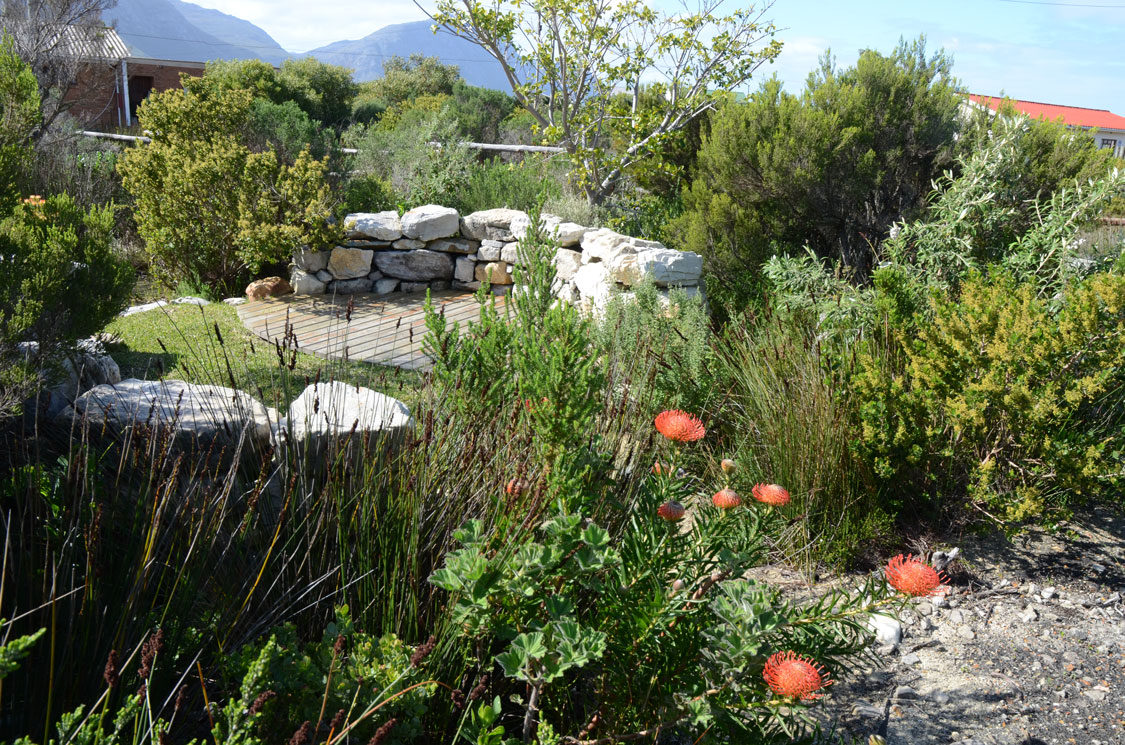Drought is a reality in South Africa, so if you’re planning a new garden or maintaining an existing one, make every drop go further with these savvy approaches to design and upkeep
Choose the right plants for gardening in drought conditions: 46 Water-Wise plants for your garden
LANDSCAPING
- Minimise hard, impermeable surfaces like paving. They reflect heat, making your plants thirstier and prevent rainwater from seeping into the soil. Lift some pavers or bricks to make soak-aways where water can sink in.
- Resurface driveways, yards and paths with porous surfaces or paving blocks and plastic grid systems filled with plants.
- Build berms or drainage channels to direct rainwater to where it’s needed or where it can soak in or be harvested.
- Contour the land to form rain gardens. These are shallow, channel-like depressions or bioswales that intercept and slow down run-off rainwater, giving it time to soak into the soil. Plant these with plants that can cope with both periodic flooding and dry periods, and also filter the water.
- As water tends to run off slopes, devise a way to catch this run-off water or build level terraces where it can soak in.
- Don’t waste rainwater; harvest it from the roof, the driveway and patios. Direct it into water tanks or reservoirs which can be hidden underground. This won’t necessarily be sufficient for the whole garden, but it’ll be enough for high-water-use zones.
- Install a grey water system to capture and recycle water from baths, showers and washing machines. Make sure you use cleaning products that are safe for garden use.
- Cover your swimming pool to reduce evaporation and install a holding tank for backwash water so that it can be returned to the pool.
- Protect plants from drying winds by erecting semipermeable screens or fences of latte, bamboo or trellis. A solid barrier will create severe turbulence or eddies causing more damage on the leeward side. Another idea is to plant loose, informal hedges as screens.
Related to gardening in drought conditions: 10 Low maintenance gardening tips
INCREASE THE SOIL’S WATER-HOLDING CAPACITY

- Mix crystals and granules like Terra-Sorb, Aquasoil or Stockosorb polymers in with the soil in the base of your planting holes. These absorb water and release it in dry periods.
- Dig in compost or hydrated coir peat at planting time.
- Improve sandy soils and those that repel water by breaking or loosening the surface crust. Apply soil-wetting agents or surfactants, like SaturAid.
- Use mulches, preferably organic, such as pine needles, bark, straw or wood chips. Apply a 5cm-thick layer to soil that’s already moist. Check that water is able to penetrate; simply loosening the mulch can improve its porosity. Reapply periodically.
LAWNS

- Lawns guzzle a lot of water, so if you need one, reduce its size.
- Plant water-wise grasses like MayFord’s new ER, All Seasons Evergreen and Shade-Over grasses as these have bigger and deeper root systems, which improve nutrient uptake and help the grass become more drought resistant.
- Encourage local, endemic grasses that can cope with dry periods and let them merge with your present lawn to dominate in dry periods.
- In small areas, use artificial grass such as Duraturf. There’s an amazing range of extremely realistic faux grasses available, or replace lawn with gravel and groundcovers.


